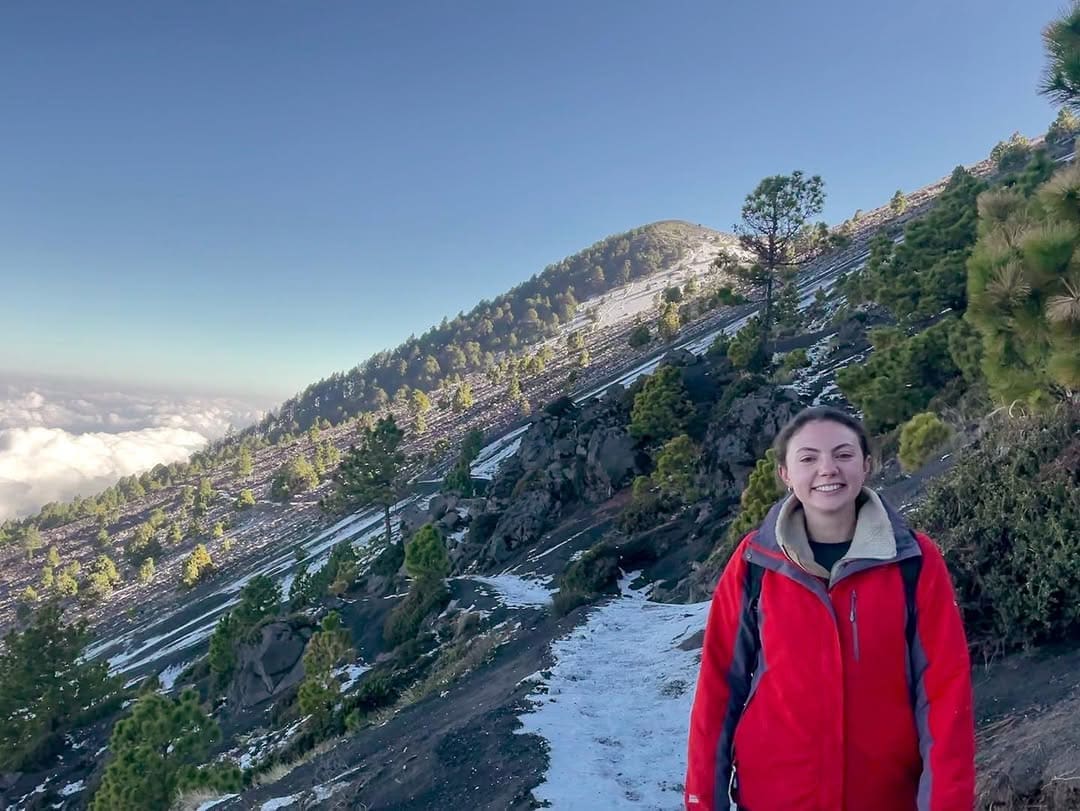Theraputic Massage in Lake Atitlan Resort
Pamper yourself with a theraputic massage at Los Elementos Day Spa. Enjoy a massage with th...
I’ve hiked volcanoes in Indonesia, trekked jungles in Sri Lanka, and kayaked across Guatemala’s Lake Atitlán. But nothing compares to my Acatenango Volcano hike — because it’s the only time I’ve genuinely worried for my safety.
I’m Rebecca Moy — a 27-year-old digital nomad from the UK. I’ve been travelling full-time for the past three years and have ticked off 29 countries so far. In 2023, I spent two months living and adventuring around Guatemala. I did everything from paddling Lake Atitlán to taking local cooking classes, but the Acatenango Volcano hike was high on my list — and for good reason.
It’s one of the most thrilling, unique, and unforgettable experiences in Central America. But it can also be extremely dangerous if you go unprepared. I know because I learned that the hard way.
I booked the cheapest tour I could find and ended up trapped in a snowstorm with soaked clothes, nearly hypothermic travel buddies, and a guide who didn’t even warn us about the weather.
In this blog, I’ll walk you through what the Acatenango volcano hike is really like, what I did wrong, what to bring, and why Acatenango volcano weather and choosing the right agency make all the difference.
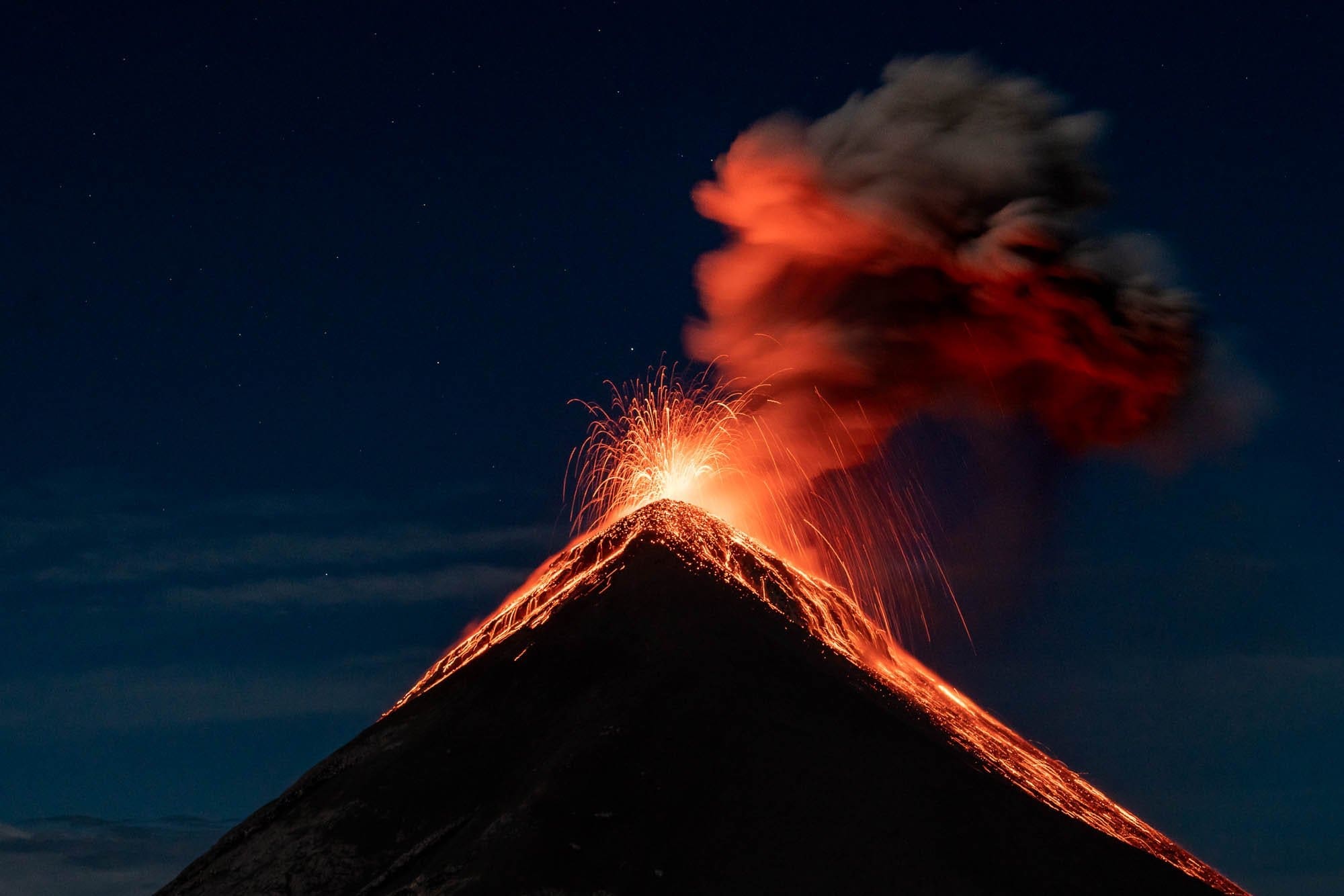
Let’s start with the basics. Acatenango and Fuego are twin volcanoes located near Antigua, Guatemala. Fuego is one of the world’s most active volcanoes — erupting almost constantly every 15 to 20 minutes. You can’t safely climb Fuego's crater, but you can hike up Acatenango and watch Fuego erupt from across the valley. It’s mind-blowing.
The hike itself is no joke. It’s a two-day, overnight trek. Day one is a steep ascent to base camp, where you’ll spend the night in tents or huts. Day two starts before dawn with a summit hike for sunrise (if conditions allow), followed by the descent back down.
The summit of Acatenango Volcano stands at 3,976 metres (13,045 feet) and the round-trip distance is about 13 kilometres (8 miles). It's steep, strenuous, and cold at the top.
It is possible to hike without a guide, but it’s strongly advised against. The terrain, altitude, and Acatenango volcano weather are not to be underestimated. You need navigation skills, camping gear, and a lot of experience to go it alone.
We met early in the morning — me, a few English lads, a German guy and one Dutch guy got grouped together. The guides handed us food and mentioned there were extra jackets “if needed.” No weather update. No gear check. No safety talk.
Looking back, that should’ve been a red flag.
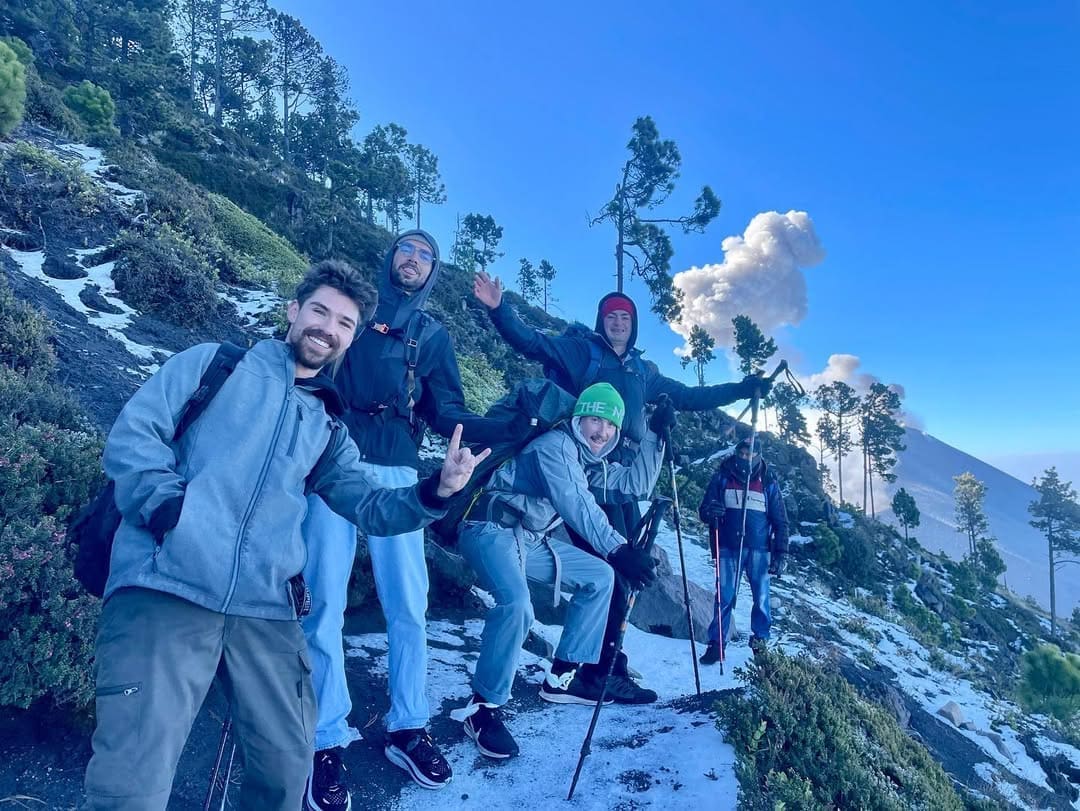
The hike started through open farmland — gentle and scenic. I even spotted a few llamas (or alpacas?). As we entered the cloud forest, the incline kicked in and the trail got muddy. The final stretch, the alpine zone, was dry but steep, with loose gravel and thinner air.
It was tough, but we were still buzzing.
Then came the snow.
What started as a light drizzle quickly escalated — fat raindrops turned icy, the wind picked up, and within half an hour we were in a full-blown snowstorm.
None of us were prepared. Not properly. Our jackets weren’t waterproof enough, our gloves were soaked through, and even the dry clothes buried deep in our packs somehow got wet. It felt like the mountain swallowed us whole.
The guides looked just as surprised as we were. No one had checked the weather properly — or at least hadn’t acted on it. With the right agency, we would’ve either postponed or packed for the worst. Instead, we pushed on, drenched and freezing, for the final brutal stretch to base camp.
One guy from our group was shaking uncontrollably, slurring his words — the early signs of hypothermia. I remember feeling genuinely scared for him. We all tried to keep morale up, but the cold was relentless.
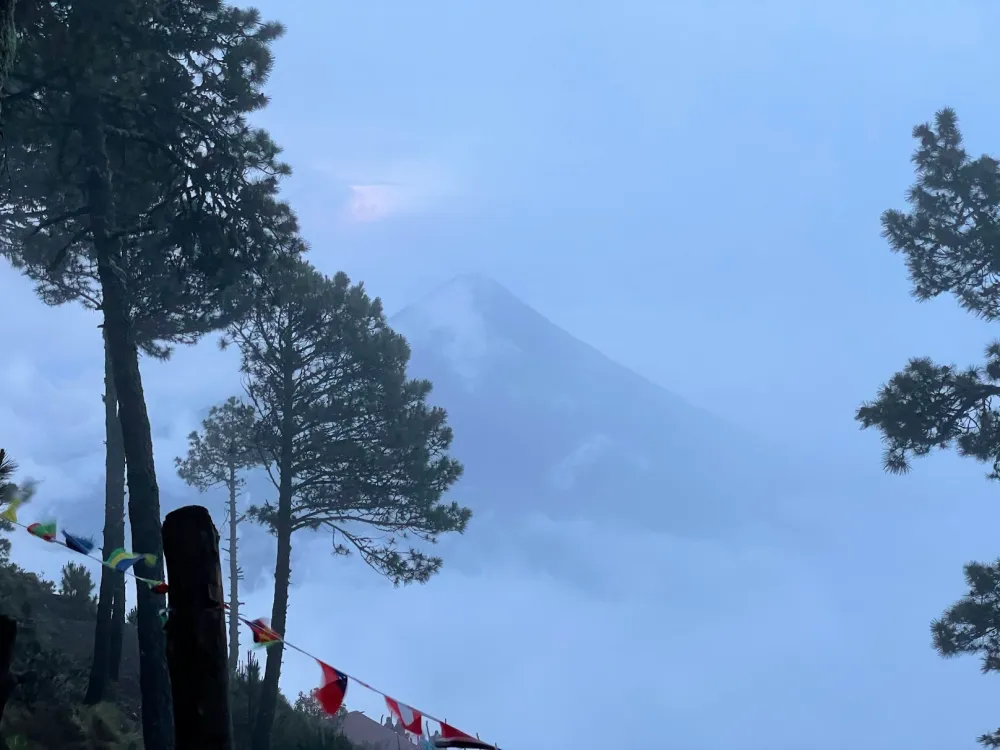
When we finally reached base camp, our situation didn’t improve much. The firewood was soaked and wouldn’t catch. No heat, no way to dry off. We huddled two by two in tiny wooden huts, zipped into damp sleeping bags, steam rising from our sodden clothes.
The only thing that saved us? A flask of hot chocolate passed around by our guide. I don’t think anything has ever tasted so good.
Every 10 to 15 minutes, Fuego erupted in the distance. Deep booms echoed through the valley, followed by red lava bursting into the dark. Even wrapped in wet clothes, teeth chattering, I couldn’t stop staring. It was terrifying and beautiful — and completely surreal.
We were supposed to summit Acatenango at 3:30am, but the trail was iced over. Our guide checked it and made the call: too dangerous. I tried to push for it — ever the optimist — but deep down I knew it wasn’t worth the risk.
The Fuego hike? Cancelled too. Visibility was low and conditions were unsafe.
It was disappointing, but in those conditions, completely understandable.
Looking back, I wouldn’t trade the experience for anything — but I would do it differently.
We were underprepared, caught in extreme weather, and nearly ended up in a real emergency. And while part of that was down to bad luck, a bigger part came down to choosing the wrong tour agency.
So if you’re planning to hike Acatenango, please learn from my mistakes.
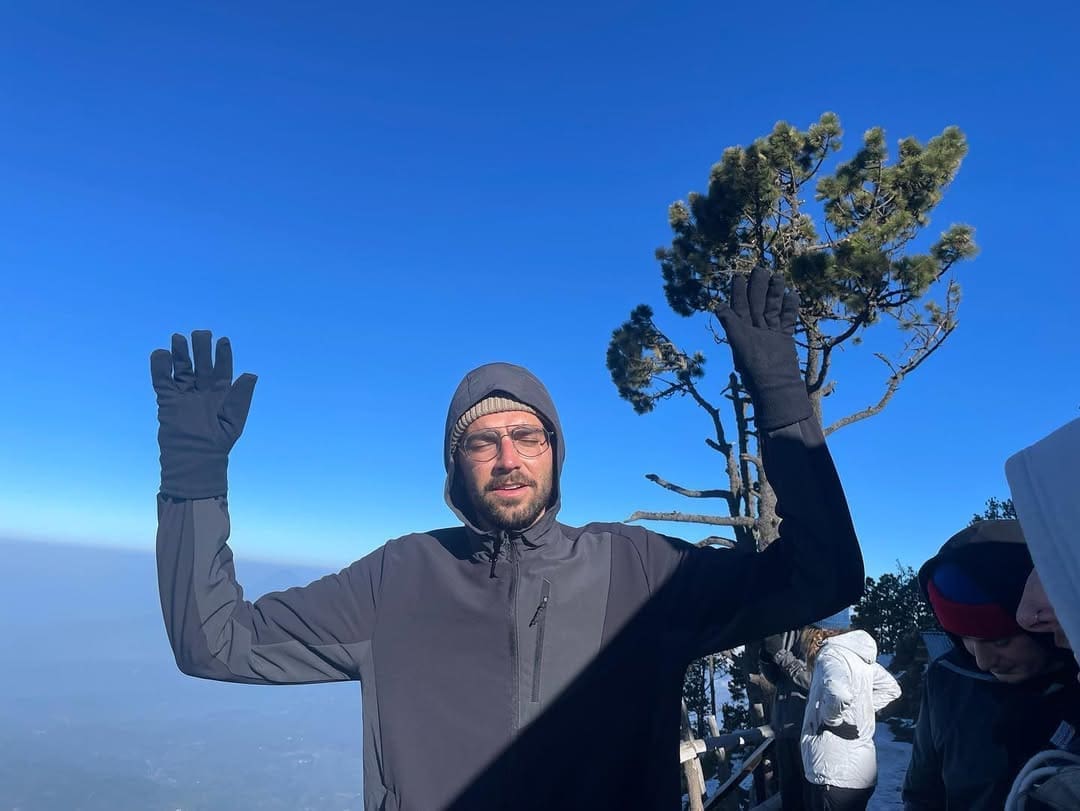
Here are the three biggest things I wish I’d known before setting foot on that volcano — and how you can avoid the same mess:
Even though locals told us snow was rare, weather at this altitude is volatile. Temperatures at the summit often drop below freezing — even when the sun’s shining at the trailhead.
If your agency doesn’t monitor the weather or give you real updates, you’re going in blind.
The agency I booked with was cheap and disorganised. We didn’t get a proper safety briefing, our gear wasn’t checked, and there was no backup plan for the snow.
I’ve done multiple tours since with Kayak Guatemala — including a Mayan fire ceremony, a kayak + zipline adventure, and a cooking class — and they’ve all been incredibly well run. I now know the owners, Elaine and Lee, personally, and I would 100% trust them with a hike like Acatenango.
They’ve been operating in Guatemala for over 20 years and work with highly experienced volcano guides. If I’d gone with them, I’m confident the experience would’ve been challenging — but safe.
The real dangers aren’t volcanic eruptions — Acatenango is dormant. The risks are hypothermia, altitude sickness, poor gear, and bad planning.
Guides help you pace the hike, monitor for signs of altitude sickness, and navigate tricky terrain. If you’re not an experienced mountaineer, don’t attempt it alone.
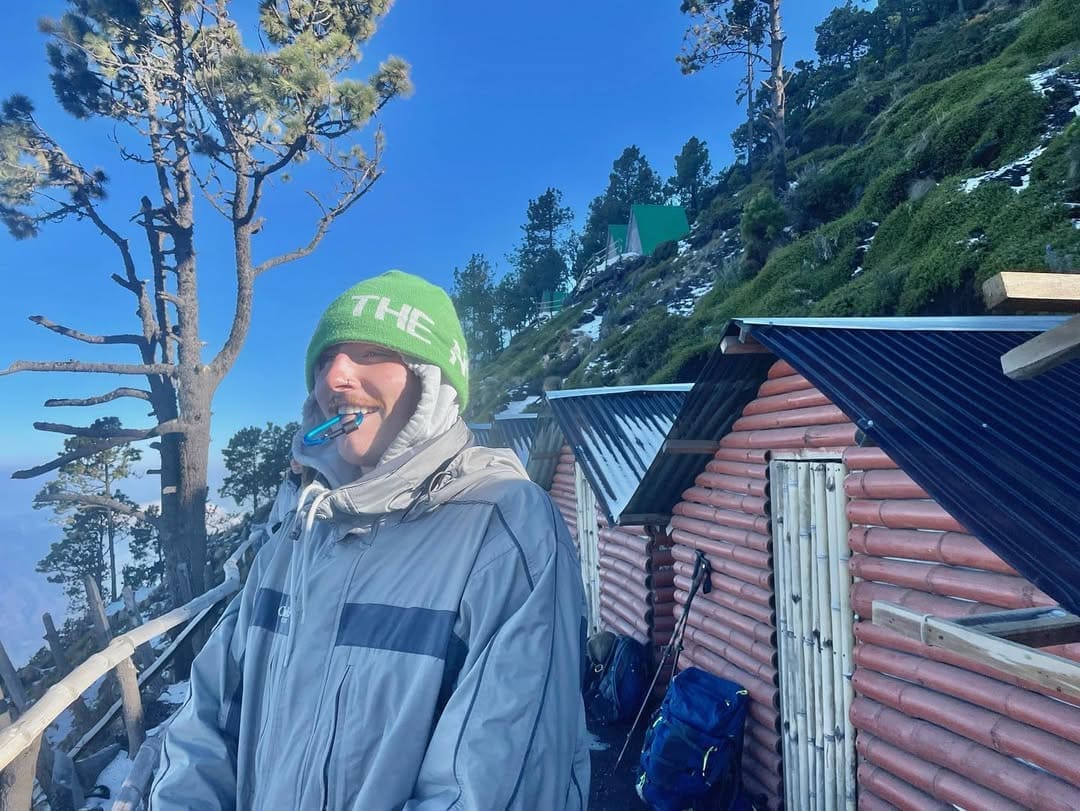
Now that you know how not to do it — let’s talk about how the Acatenango hike is meant to go when you’re with a solid tour company that actually checks the weather, plans ahead, and keeps you safe.
Here’s a breakdown of the full experience when everything goes right:
Day 1: You’ll climb through farmland, cloud forest, and alpine terrain. The views get better with every step, but the altitude makes it hard work. It takes around 4–6 hours to reach base camp.
Base Camp: This is where the magic happens. You sleep in wooden huts with a direct view of Fuego as it erupts throughout the night — you’ll see glowing lava against the stars and hear thunder-like booms echoing across the valley. It’s truly unforgettable.
Summit: You’ll wake up around 3:30am and hike the final steep stretch to the summit in the dark. Watching the sunrise from the top is an epic reward. Temps can drop below -5°C, so layer up.
Optional Fuego Hike: A side hike to Fuego is possible in good weather. It’s harder and riskier, with loose volcanic rock and steeper terrain, but for many, it’s the most thrilling part of the trip — getting up close and personal with an erupting volcano.
Descent: Eat breakfast, pack up camp, and descend. It usually takes 2–3 hours to get back down to the trailhead. On the way, you might even spot paragliders hiking up with their gear — they summit and glide back down in a single epic swoop.
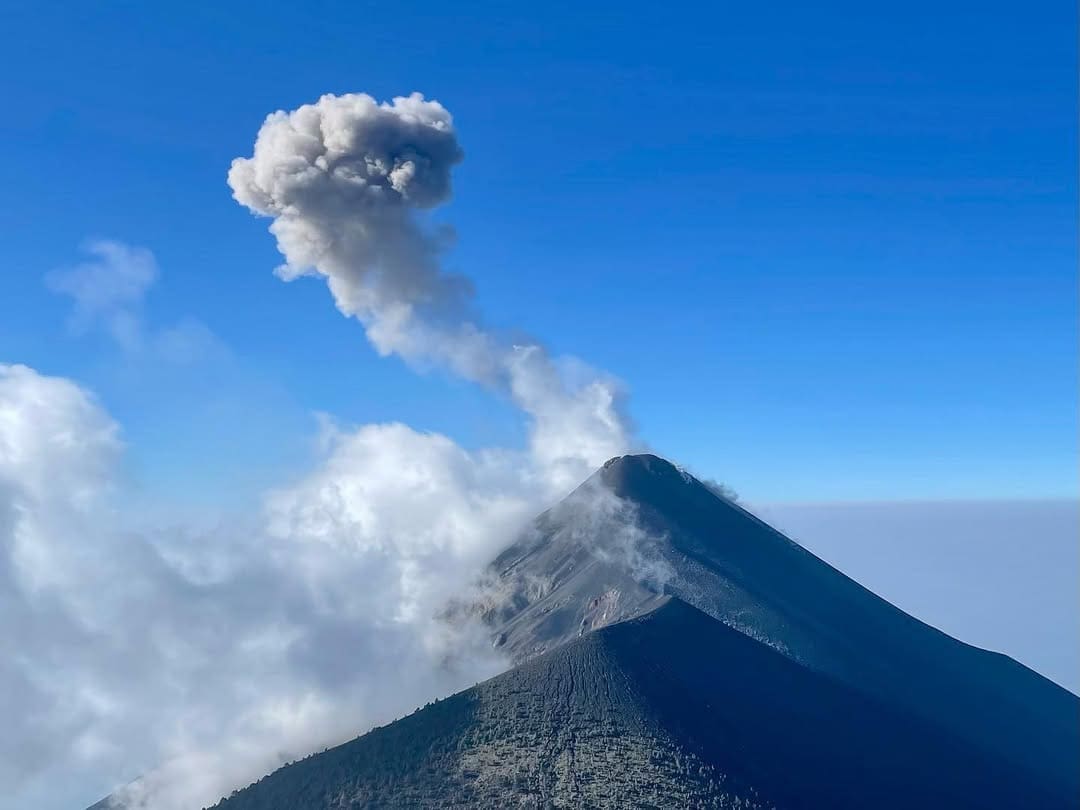
Here’s what I wish I had with me — and what you definitely need:
Clothing
Gear
Most tour operators will provide tents, sleeping bags, mats, and dinner/breakfast — but always double check. If they seem vague, that’s your sign to walk away.
After that snowstorm nightmare, I made one promise: never cut corners on safety again.
Since then, I’ve done three other tours with Kayak Guatemala, and they’ve been top-tier every time. The guides are friendly, professional, and prepared. The equipment is high-quality. And the communication is always clear.
They know Guatemala inside and out, and they’re deeply connected to the local communities. It’s run by Elaine and Lee, two brilliant humans who’ve been here for over two decades.
If you want to hike Acatenango safely, comfortably, and with actual joy, I recommend them without hesitation.
What could’ve been a once-in-a-lifetime moment turned into a lesson in preparation, gear, and picking the right people to trust with your safety.
Don’t make the same mistake I did. Check the weather. Bring proper gear. And most importantly, go with a company that’s got your back.
👉 Book your Acatenango hike with Kayak Guatemala: Acatenango Guatemala Volcano Hike – Kayak Guatemala
👉 Want full trip info and packing tips? Read the Full Acatenango Volcano Hike Guide
